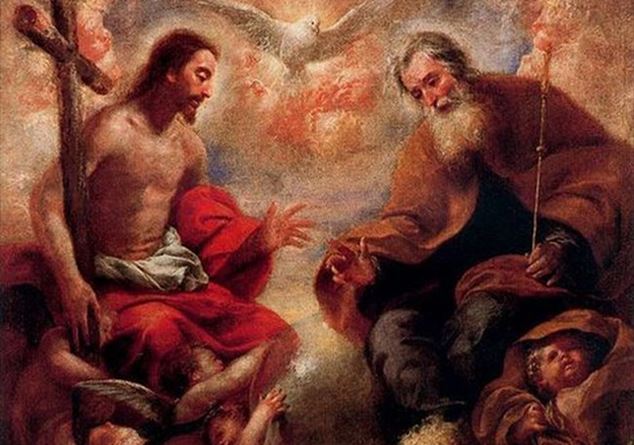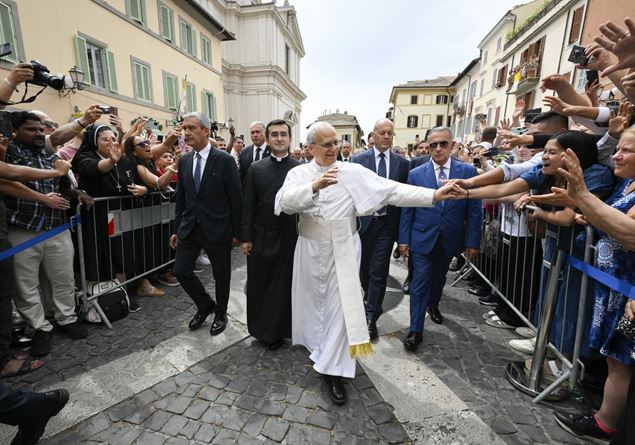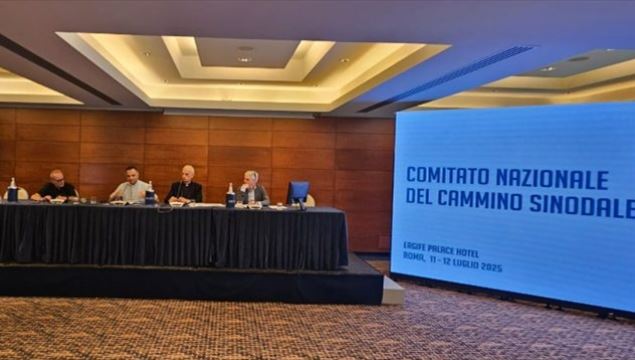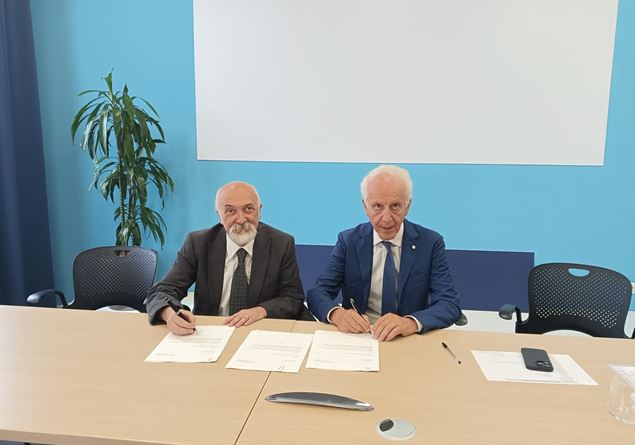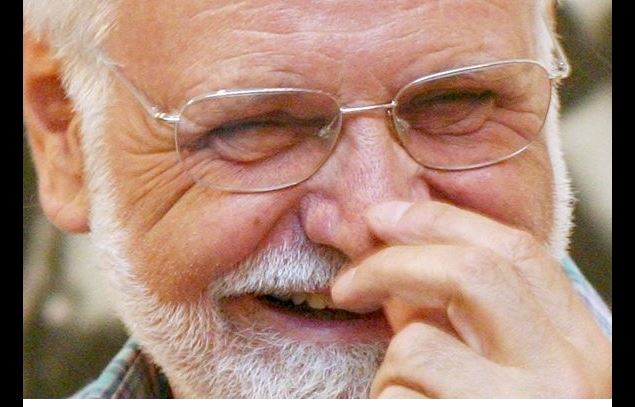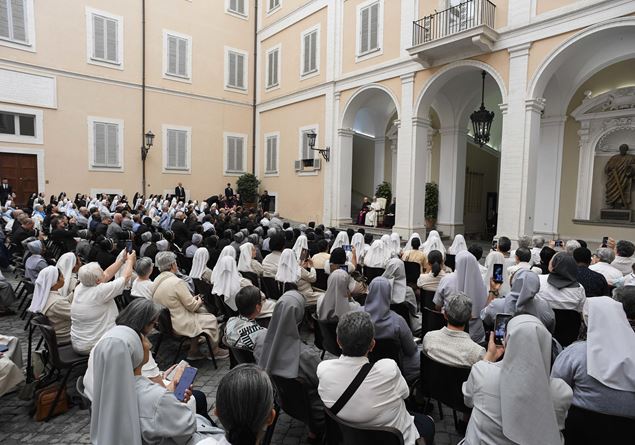The solemnity of the Holy Trinity He occurs every year on Sunday after Pentecost, then as a feast of the Lord. It is therefore placed as a reflection on all the mystery that in other times is celebrated in its different moments and aspects.
It was introduced only in 1334 by Pope John XXII, while the ancient Roman liturgy did not know it. It proposes a grateful look at the fulfillment of the mystery of salvation made by the Father, through the Son, in the Holy Spirit. The mass begins with the exaltation of the Trinity God “because his love for us is great”.
The Trinity of Masaccio
The historical origins
Although the Trinitarian dogma had already been codified in the Church since the time of the apostolic symbol until the eighth century, the Church did not celebrate any anniversary in its honor. The first testimony in this regard comes from the Alcuino Monaco of York, which decided the editorial staff of a votive mass in honor of the mystery of the Holy Trinity (apparently, in the communities of intentions with San Bonifacio, apostle of Germany). However, this mass was only a private fact, an aid to personal devotion – at least until 1022, in which it was officially recognized by the Council of Seligenstadt.
In 920, meanwhile, Stefano Vescovo di Liegi had established in his diocese a feast dedicated to the Holy Trinity and for his celebration he had made a liturgical office composed. His successor, requested, maintained this holiday – which went over time by spreading, thanks also to the support of the monastic order (in particular of Bernone, abbot of Reichenau in the early 11th century), so much so that a document from 1091 of the abbey of CLuny attests to us that his celebration was now well rooted. In the second half of the 11th century, Pope Alexander II expressed his judgment on this feast: while noting his wide diffusion, he did not consider it mandatory for the universal Church, due to the fact that “Every day the adorable Trinity is without laying invoked with the repetition of the words: Gloria Patri et Filio et Spiritui Sancto, and in many other praise formulas».
Despite this, the party continued in its diffusion (both in England, by the work of St. Thomas of Canterbury, Both in France, thanks also to the Cistercian order), so much so that, at the beginning of the thirteenth century, the Ruperto abbot states: “Immediately after celebrating the solemnity of the coming of the Holy Spirit, we sing the glory of the Holy Trinity in the office of the Sunday that follows, and this provision is very appropriate because immediately after the descent of that divine spirit they began preaching and faith and, in the baptism, the confession of the name of the father’s name. Son and the Holy Spirit. ” (Ruperto abbot, of the divine offices, I, XII, c. I).
Given the recognition de facto of this holiday in so much part of the Church, Pope John XXII, in the first half of the fourteenth century, in a decree Sancì that the Catholic Church accepted the feast of the Holy Trinity and extended it to all local churches
Benedict XVI’s explanation
In the 2009 Angelus Pope Ratzinger thus explained this solemnity: “Today we contemplate the Holy Trinity as Jesus made it known to us. He revealed that God is love” not in the unity of a single person, but in the trinity of a single substance “(preface): he is a creator and merciful father; He is an unigenitous son, eternal skis incarnate, dead and risen for us; It is finally a Holy Spirit who moves everything, cosmos and history, towards full final recapitulation. Three people who are only one God because the Father is love, the Son is love, the spirit is love. God is all and only love, pure love, infinite and eternal.
It does not live in a splendid solitude, but it is rather inexhaustible source of life that incessantly gives itself and communicated. We can some extent by observing both the macro-universe: our land, the planets, the stars, the galaxies; Both the micro-universe: cells, atoms, elementary particles. In all that exists, the “name” of the Holy Trinity is imprinted in a certain sense, because all being, up to the last particles, is to be in relation, and thus transpires the god-relation, lately transpires the creator love.
Everything comes from love, tends to love, and moves pushed by love, naturally with different degrees of awareness and freedom. “O Lord, Our Lord, / How admirable your name is all over the earth!” (Ps 8,2) – The psalmist exclaims. Speaking of the “name” the Bible indicates God himself, his truest identity; Identity that shines throughout the creation, where every being, for the very fact of being there and for the “fabric” of which it is made, refers to a transcendent principle, to the eternal and infinite life that is given, in a word: to love. “In him – said St. Paul in the ATENE ARETEPAGO – we live, move and exist” (Acts 17,28).
The strongest test that we are done in the image of the Trinity is this: only love makes us happy, because we live in relationship to love and live to be loved. Using an analogy suggested by biology, we would say that the human being brings the profound trace of the Trinity, of God-love to his “genome” in his own “genome”.
Holy Trinity, icon
An incomprehensible mystery but not against reason
The mystery of the Holy Trinity is a mystery and as such cannot be understood. But not for this it is something unreasonable. In the Catholic doctrine what is mystery is so unplugable with reason, but it is not irrational, that is, it is not in contradiction with reason.
Reason leads to the uniqueness of God: God is absolute and logically cannot exist more absolute. Well, the reasonableness of the mystery of the Trinity lies in the fact that it does not affirm the existence of three of the, but of a single God who, however, is in three equal and distinct people.
In the I believe It is said: “I believe in one God in three equal and distinct people, Father, Son and Holy Spirit”.
What is the Father, such is the Son and such is the Holy Spirit. The Father is incorrect, the Son is incorrect, the Holy Spirit is incorrect. Almighty is the father, omnipotent is the son, omnipotent is the Holy Spirit. However, there are not three misunderstood, three absolutes, three omnipotent, but an incorrect, an absolute and an omnipotent. God and Lord is the Father, God and Lord is the Son, God and Lord is the Holy Spirit; However there are no three of the and gentlemen, but one God, a single Lord (Atanasian symbol).
An analogy to understand
To understand something about the Trinity, but without the possibility of exhausting its mystery, this analogy can be used. Sacred Scripture says that when God created man, he created it in his “image” (Genesis 1,27). Therefore, in man there is a distant but still present image of the Holy Trinity. Man possesses the mind and mind generates thought. The thought, contemplated by the mind, is loved, and so from thought and mind love proceeds. Now mind, thought, love, they are three very distinct things with each other, but absolutely inseparable from each other, so much so that one can say that they are one thing in man.
In the Trinity the Father is mind, which from all eternity generates its perfect thought (the logos). The thought, eternally generated by the Father, exists, as a distinct person, and it is it Holy Spirit. But like the mind, thought and love are three distinct, but absolutely inseparable things in man, so the Father, the Son and the Holy Spirit, although they exist as distinct people, are however a god alone.





